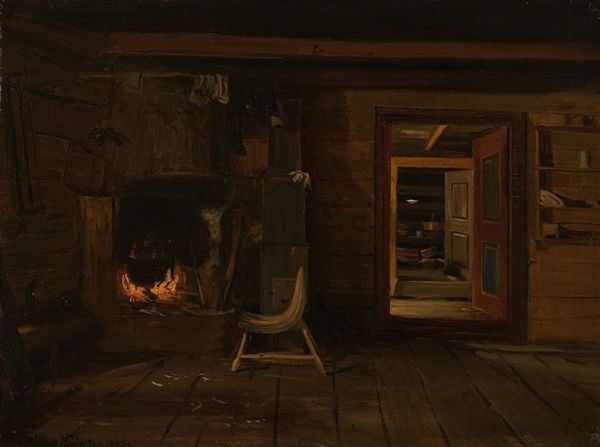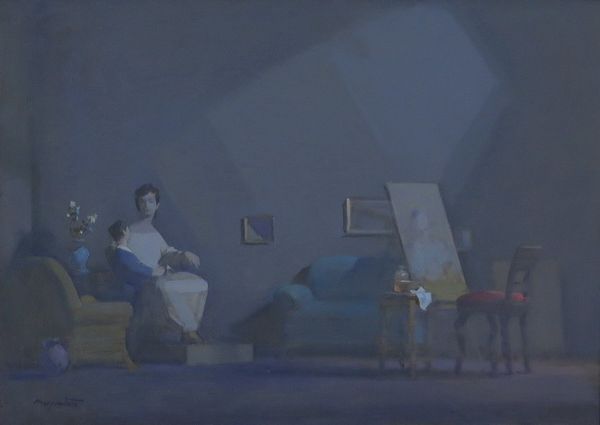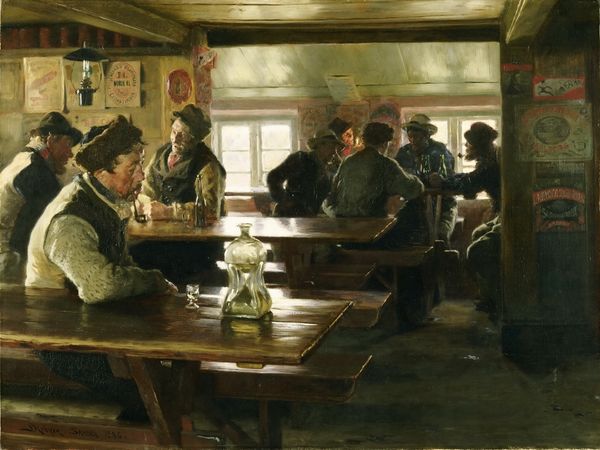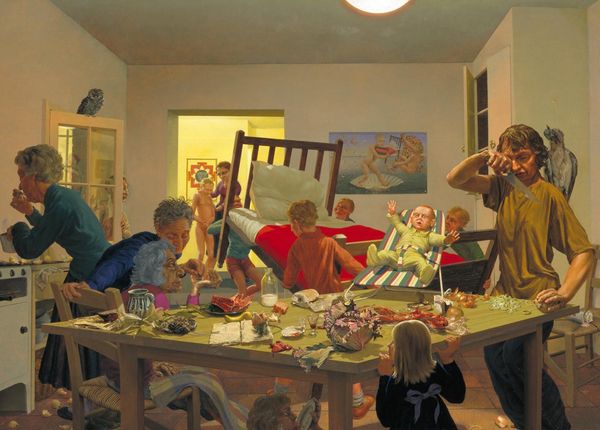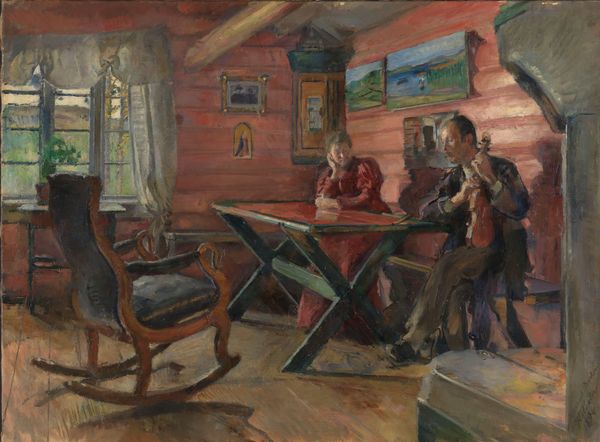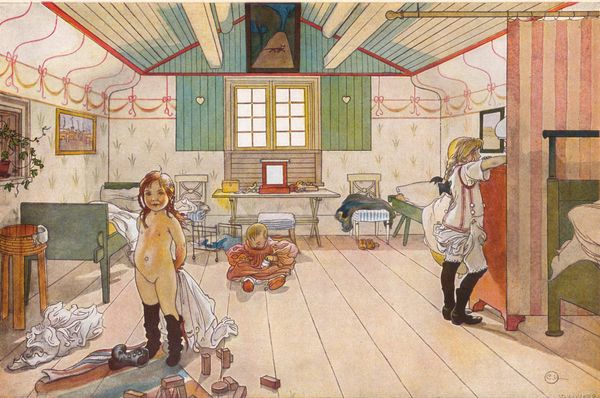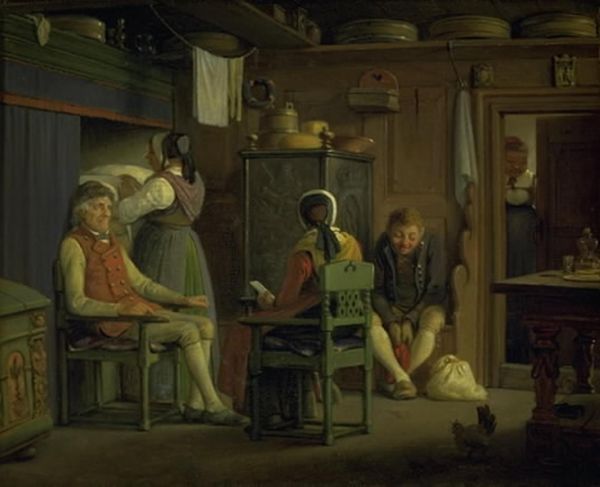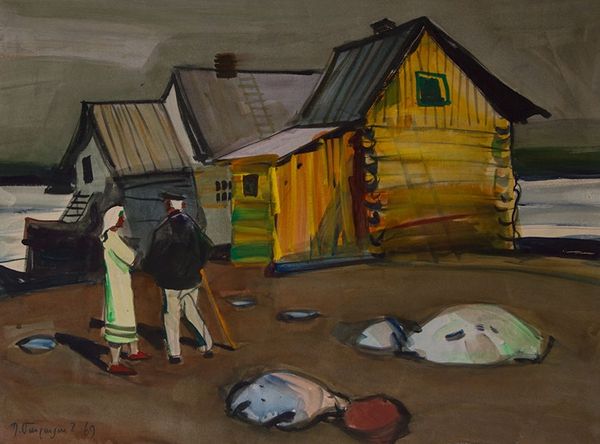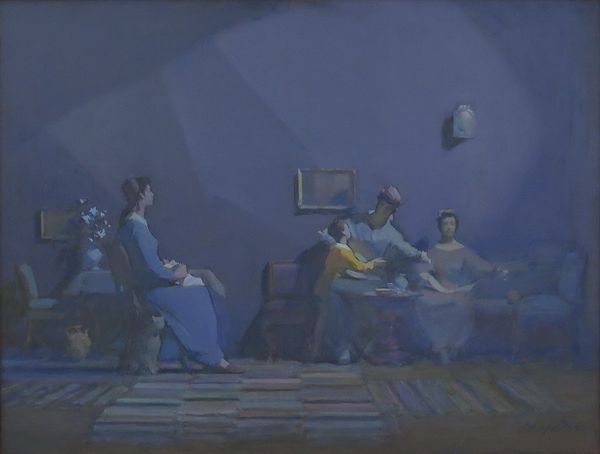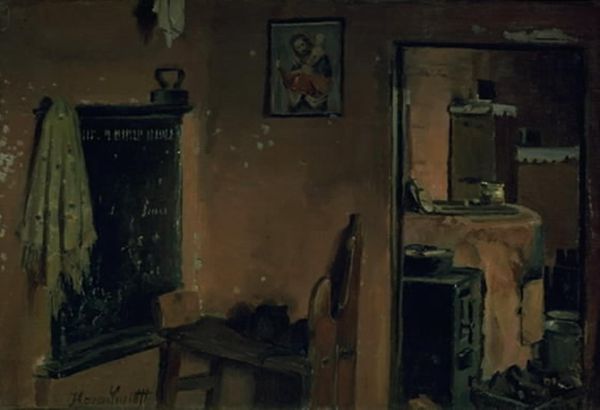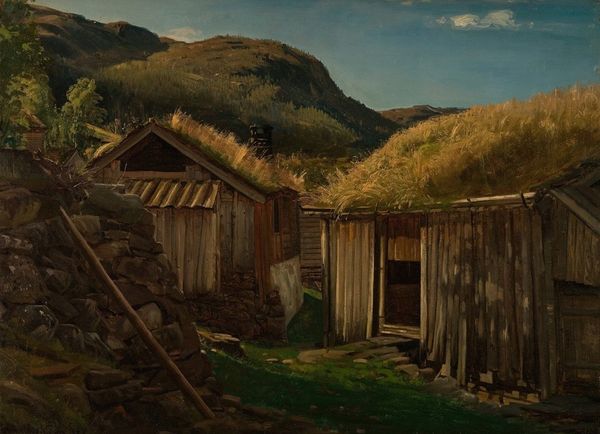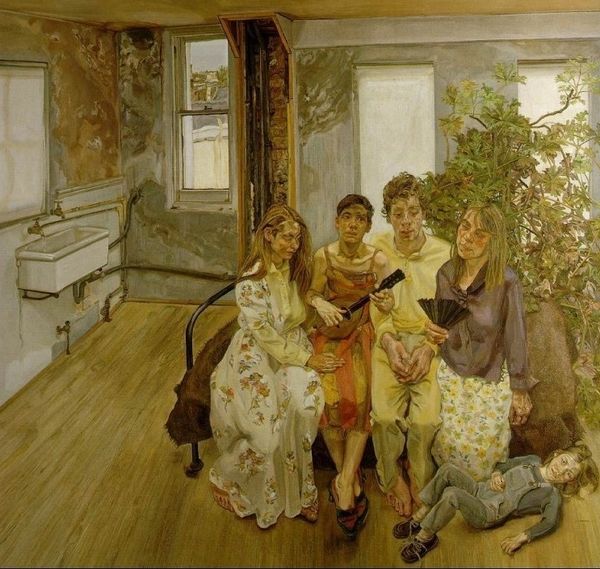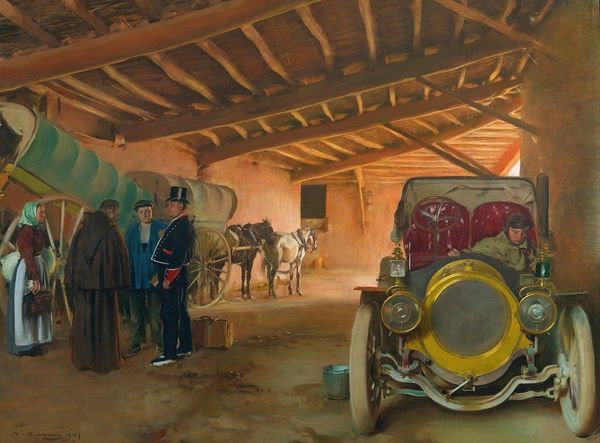
painting, gouache
#
portrait
#
gouache
#
medieval
#
painting
#
gouache
#
painterly
#
russian-avant-garde
#
genre-painting
#
academic-art
Copyright: Public domain
Curator: The painting before us, created in 1907 by Boris Kustodiev, is entitled "School in Moscow Russia". Kustodiev employed gouache to capture this genre scene. What are your first impressions? Editor: There's a strange feeling of both intimacy and isolation here. The color palette is muted and predominantly earth-toned, reflecting what appears to be a very austere, almost primitive, classroom setting. The children, dressed in what seem to be handmade clothes, are physically close but seem psychologically distant, heads bent in study. Curator: Indeed. When considering Kustodiev's body of work, his deep engagement with Russian folk art and traditions is striking. This piece highlights the craftsmanship inherent in rural life. The wooden structure itself speaks volumes—look at how it is made, constructed. What can that tell us about materials, labour, and economy? Editor: The setting also reflects a critical historical moment. Think about the Russian Revolution, which was brewing in the years leading up to this painting. Who had access to education? What role did the church play? Consider these children, who are seemingly learning to read the sacred texts. And look at how Kustodiev frames their social identity by clothing each of them in folk dress; the cultural values here are clearly communicated. Curator: Absolutely. Let’s focus, too, on the making of this painting: the rough texture of the gouache and how Kustodiev deployed it in order to mimic a certain materiality in terms of his broader social practice. He's intentionally drawing attention to these production means, suggesting an engagement with contemporary social struggles and realities that often were excluded from more academic genres. Editor: The almost reverential posture of the students and the prominent position of the teacher suggests the hierarchical social structures perpetuated by systems of education and spiritual power. Where does art function within such structures, both at that time and in the contemporary context? Curator: And if you consider Kustodiev’s own biography, you might even begin to see this is not some ideal, simple nostalgia for Russian cultural practice. Kustodiev had an injury that required surgery to deal with Tuberculosis of the spine in 1916. He was beginning to show and understand a material decline; what can we read there in terms of social value or artistic statement? Editor: It becomes imperative to think about access to that treatment. While there is great potential for knowledge-building, this visual narrative presents several social, ethical, and potentially exploitative conditions within the very landscape and subjects themselves. Curator: In many ways, that gets right to the heart of Kustodiev's work and our ongoing social reality; it certainly emphasizes just how much his paintings can engage with art production, too. Editor: Indeed. Art is a social practice! Thank you!
Comments
No comments
Be the first to comment and join the conversation on the ultimate creative platform.
